- The first step is making the call.
- 1300 022 482
- hello@searchpartyproperty.com.au
30th September 2023 – Property Market Update
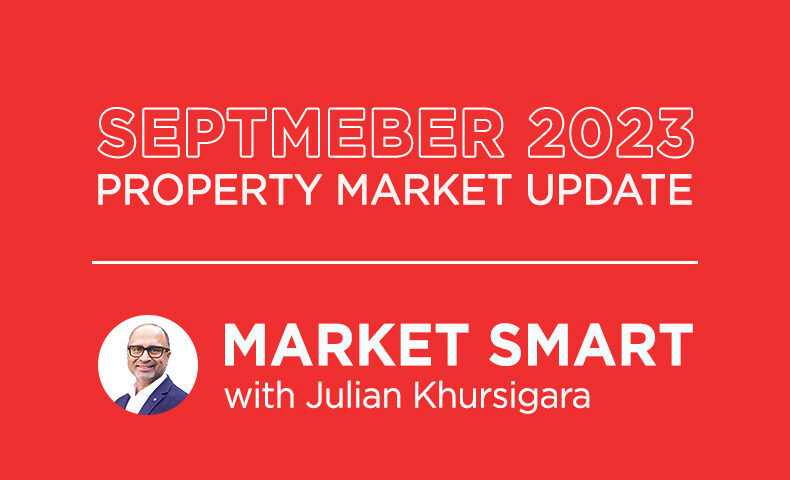
September Market Smart – More of the same?
In this month’s Market Smart, we delve into the current state and future trajectory of the Australian property market. As we analyse the latest trends, from rising housing values to the implications of increased immigration, it looks like we’re set for a steady continuation of the same patterns and trends that have been observed for several months.
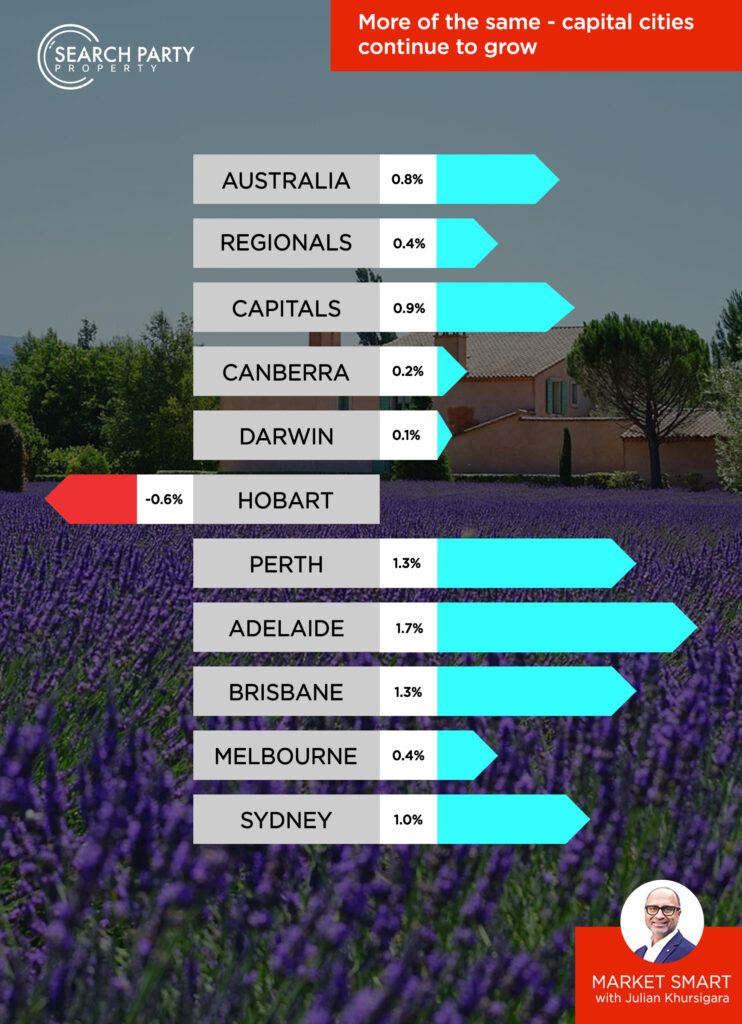
Where we are now?
The Australian property market has continued its upward trajectory in September, with the combined value of housing showing consistent growth. The trend in advertised stock levels has been a significant influence on housing values. Since early June, new listings have been on an upward trajectory, defying the typical seasonal trend where new listings usually remain flat or decline during winter. As of September 24th, new capital city listings were 14% higher than the same time last year and 8.0% above the previous five-year average.
With an increase in freshly advertised properties, there’s also been a rise in the total number of homes advertised for sale. Although total capital city listings remain below last year and the five-year average, there’s a clear upswing in available supply. The rolling four-week count of total listings has increased by 6.7% since early July. This increase in listings implies more choices for buyers, leading to less urgency and more time for deliberation and
negotiation.
In terms of dwelling values, cities like Sydney, Melbourne, and Brisbane have shown notable growth. For instance, Sydney’s median home value stands at $1,110,660, with a monthly growth of 1.0%. Brisbane led the gains with a 1.3% increase in home values, while Melbourne saw a growth of 0.4%.
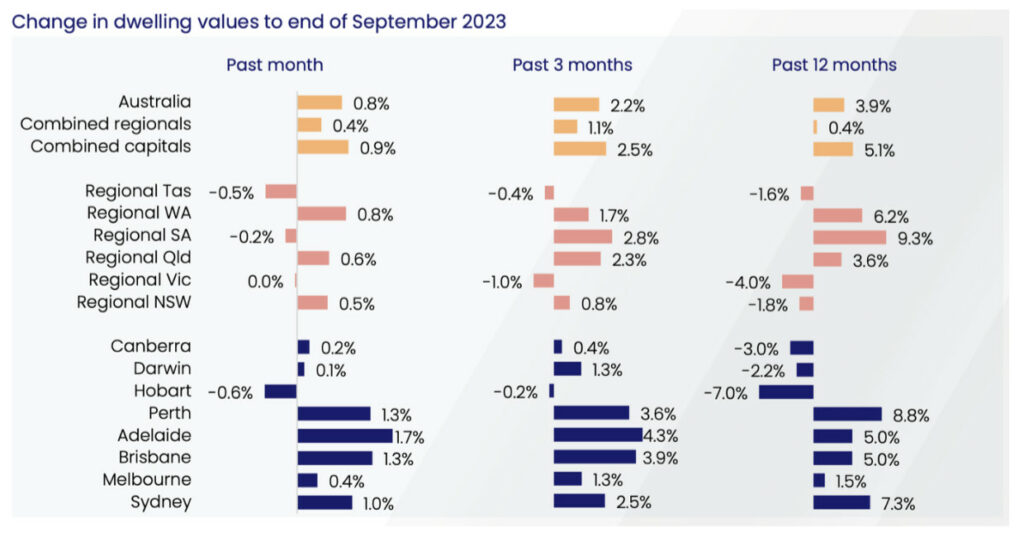
How did we get here?
Advertised stock levels have risen due to a combination of more fresh listings and a slower rate of absorption. Although modelled estimates for capital city sales through the September quarter were 6.3% above the previous five-year average, they were down 5.7% relative to the June quarter. Factors such as housing affordability challenges, high interest rates, and low consumer sentiment have dampened housing sector activity.
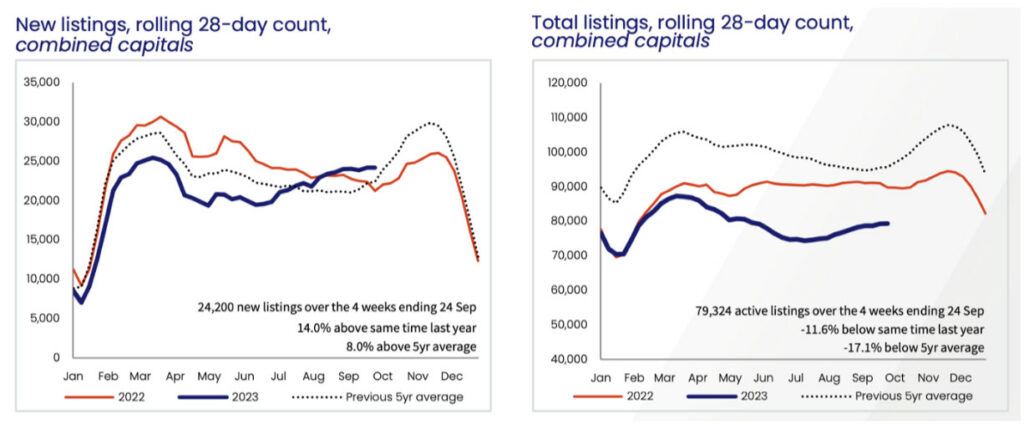
Another significant factor has been migration and housing demand. The country has seen a decline in overseas departures, while the number of international arrivals has soared relative to pre-pandemic figures. This trend, combined with a consistently low average household size in major cities, has escalated housing demand, fostering heightened
competition for available properties.
Where are we going?
As we approach the Spring selling season, the market’s direction remains uncertain. Despite initial pessimistic forecasts, the combined capital cities have witnessed robust growth.
Mortgage Trends and Implications
Borrower activity indicates increasing belief that the RBA board may have concluded its cash rate increments. However, borrowing remains limited due to significant serviceability buffers. Recent ABS statistics on housing lending indicate a decline in mortgage lending in three of the last four months.
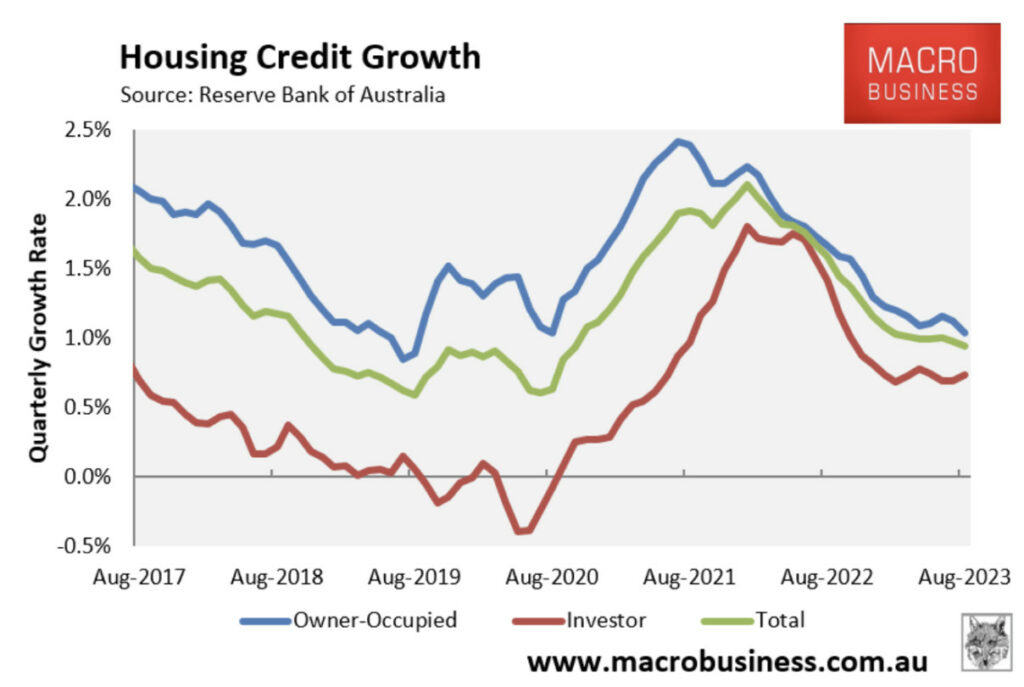
In the current cycle, the surge in mortgage interest repayments has produced an unprecedented rise in costs, significantly surpassing previous peak increases. This steep ascent in repayment rates has triggered a spike in mortgage delinquencies, with unprecedented increases in 30-day or more arrears.
Over the last three years, Australia has experienced a significant boom in mortgage refinances. This trend is expected to continue until the ‘fixed rate mortgage cliff’ concludes in early 2024.
Influence of Immigration on the Property Market
Despite promises of a lower immigration policy, Australia is recording its highest ever net overseas migration. This surge in immigration has been attributed to various factors, including the government’s focus on supplying cheap labour and demand to Big Business, Big Property, and the education-migration complex. It’s hoped that immigrants can fill gaps in the labour market, especially in sectors facing skill shortages. This can lead to economic growth and increased productivity. However, if not managed correctly, it can also lead to wage suppression in certain sectors. Of course, immigration is also the primary driver of property value growth we’re experiencing currently.
Interest Rates and the RBA’s Stance
Earlier this week, the Reserve Bank decided to leave the cash rate target unchanged at 4.10%. The RBA’s focus remains on returning inflation to target within a reasonable timeframe, though their decisions in the coming months will play a pivotal role in shaping the property market’s trajectory. While it looks as though the market is in need of further contraction, for a variety of reasons, it seems unlikely that the RBA will touch interest rates again until well into 2024.
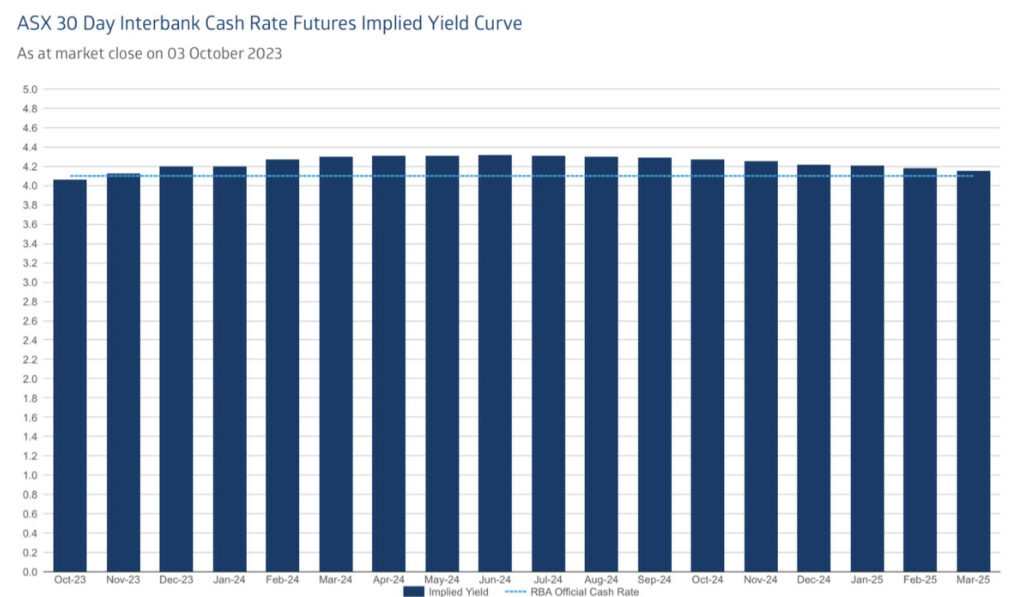
State of Housing Construction
The Albanese government’s ambitious goal of 1.2 million new homes over five years is facing significant challenges. Recent data highlights a decline in dwelling approvals, loans for new dwellings, and new home sales, suggesting a potential reduction in future home constructions.
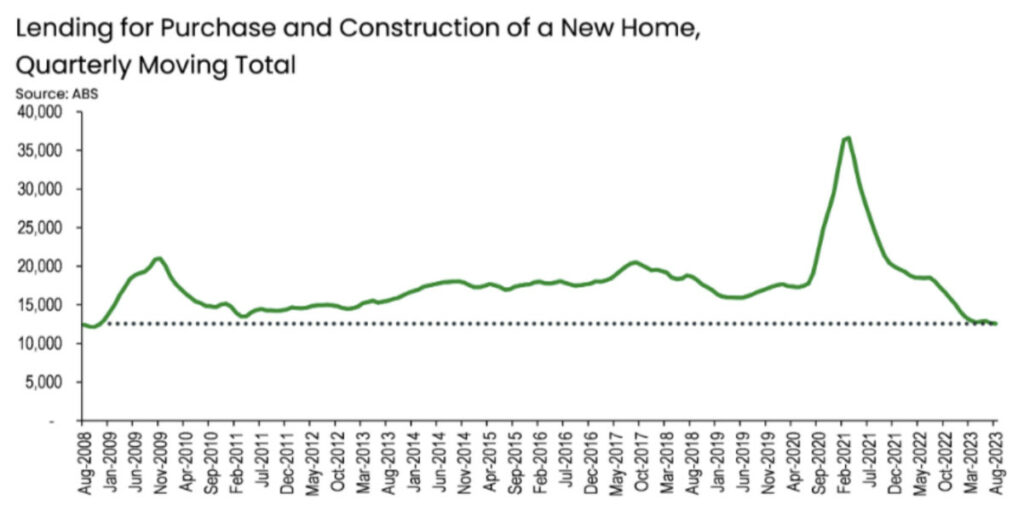
(Source: ABS 2023)
Compounding the issue, the construction sector has seen an uptick in external administration appointments, with a 38% increase compared to the same period in 2022. Factors such as rising construction costs, a shortage of builders, and escalating insurance premiums are further straining the industry. With Australia’s population growing rapidly due to high immigration rates, these challenges in the construction sector could exacerbate the housing shortage, driving up rents and potentially increasing homelessness.
Regional Variations and Key Cities to Watch
Cities like Adelaide, Brisbane, and Perth are leading the growth in house prices. However, the pace of growth in cities like Sydney, especially at the upper end of the market, has eased. Regional markets are also showing varied growth patterns, with some lagging behind their capital city counterparts.
At Search Party Property, we specialise in developing tailored investment strategies and will work with you to come up with a suitable plan of attack. We also regularly assess your strategy ensuring that it is fit for purpose and delivering the desired results.




